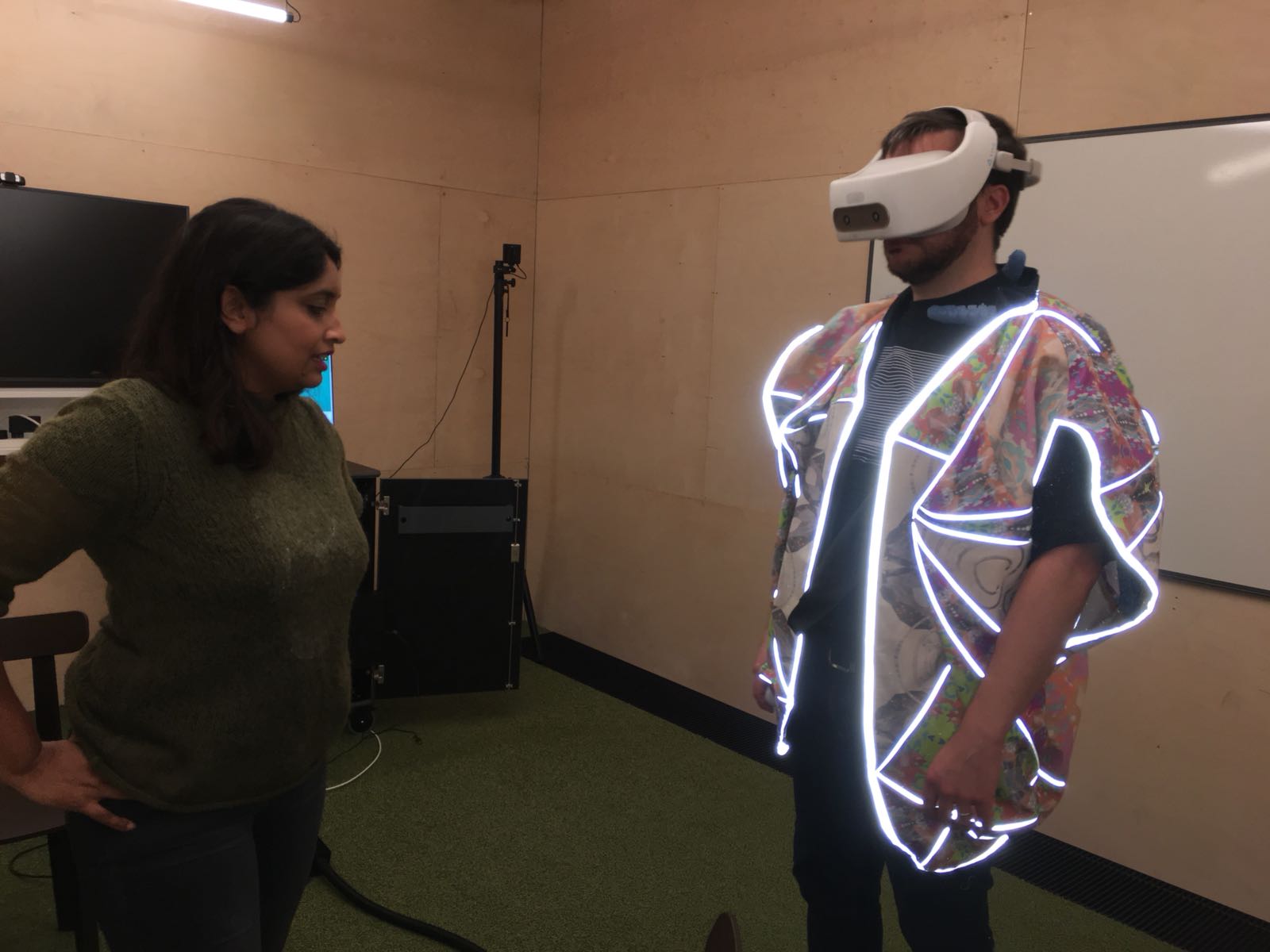collaborations
Project (Un)Balance, 2018
A collaborative project with Spatial and Interaction Designer Elyne Legarnisson. Farid Akmal Studio was tasked with designing and creating the wearable element of the project.
“(Un)Balance is an interactive experience in XR (extended reality) inviting participants to play on the edge of stability. Virtual and physical tools are combined to create an alternative reality in which participants are provoked to break habitual movement patterns. (Un)Balance extends body awareness through augmenting and shifting the perception of one’s body and the surrounding world.
(Un)Balance was developed at the Interactive Architecture Lab. It was exhibited this September at the Ars Electronica Festival, Austria.
The XR experience interrogates human-space interactions to broaden our repertoire of movements. It draws upon somaesthetics theory which accentuates the aspect of bodily experience in aesthetics and spatial engagement and foregrounds the moving body as a malleable instrument through which we perceive the world. (Un)Balance suggests that sensory perception is amplified by playfully learning body awareness through moving in unusual ways and exploring different response patterns. The non-goal-oriented experience in XR engages participants in an exploratory process. Emphasising the core of the body as the least engaged body part in everyday life, body awareness is extended and sustained through sensory augmentation, unpredictable patterns of response, and partial incoherence of the virtual and physical layers of the experience. Guided by curiosity and a desire to understand this alternative reality, the participant explores the world through play.
The experience is composed of four interwoven elements. The participant moves on a tilting platform, which pushes the sense of balance to its limits. Apparel worn on the torso augments sensations of shifting weight through moving and balancing and contributes haptic and auditory stimulation. Finally, a VR headset and a set of motion trackers placed on the participant’s body as well as the platform enable a virtual avatar and a virtual world to change in substance and gravity attraction in response to the participant’s movements.
In contrast to contemporary spatial contexts and interactions which tend to limit and control movement and place importance on efficiency, Un(Balance) imagines a world where embodied interactions aim at training curiosity and exploration.”
Source: https://www.behance.net/gallery/69940763/(un)balance-InteractiveArchitectureLab
Project GhostNet, 2018
Project GhostNet is funded by European Union’s Horizon 2020 research & innovation WearSustain grant No 732098 to innovate sustainable wearable technology. BB Studio commissioned Farid Akmal in order to produce the wearables aspect of an immersive VR experience via a sustainable design approach. The collaboration resulted in the creation of interactive VR underwater environment which was integrated with wearables that have pneumatic-haptic elements. Farid Akmal was tasked to design jackets which not only housed the electronic components but are also important to the experiential narrative of the project. To achieve this, Farid engaged with HEBA, a migrant women’s charity, to construct the jackets. Additionally, Farid was also tasked with the creation of the haptic pneumatic elements incorporated into the jacket using only reclaimed PVC and other sustainably-sourced materials. The jackets and their components were designed by Farid to be completely modular so that they can be cleaned, fixed or recycled easily, responding to the concept of a circular design ecosystem.
Speculative Design Workshop, 2017
Farid Akmal Studio held a Speculative Design Workshop as part of SciFi London’s #Hackstock Beyond 2k17 event held at The Trampery on the 6th of May 2017. The workshop aimed to introduce participants, who are designers themselves, a crash course in Speculative Design, an approach to design developed by Anthony Dunne and Fiona Raby. During the workshop, they are given future scenarios in which they will develop wearables or pieces of technology to reflect such a future and provide a hypothetical solutions to its corresponding problems.







